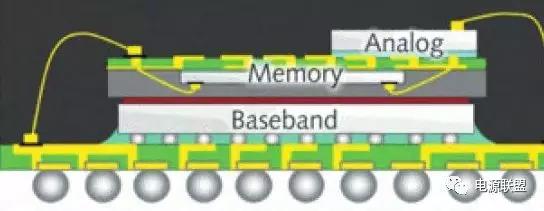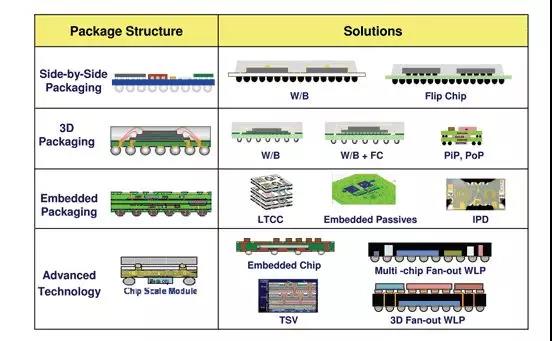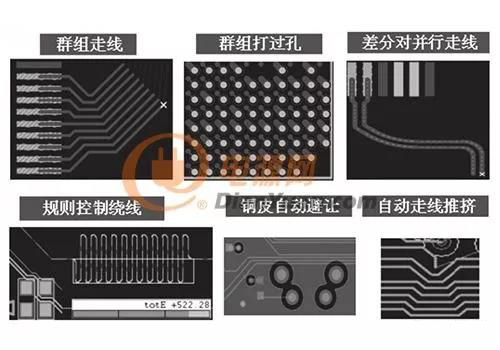With the advent of the Internet of Things era, global terminal electronic products are gradually moving toward multi-functional integration and low-power design, which has led to the increasing attention of SIP technology that can integrate multiple bare crystals in a single package. In addition to the existing expansion and testing giants to actively expand the SIP manufacturing capacity, wafer foundries and IC substrate plants are also competing to invest in this technology to meet market demand.
Earlier, Apple released the latest apple watch, which uses a SIP package chip to add color to the new watch in terms of size and performance. The development of the chip has shifted from pursuing power consumption decline and performance improvement (Moore's Law) to more pragmatically satisfying market demand (beyond Moore's Law).
According to the definition of the International Semiconductor Route Organization (ITRS): SIP is a single entity that implements a certain function by preferentially assembling a plurality of active electronic components with different functions and optional passive components, and other devices such as MEMS or optical devices. Standard packages form a system or subsystem.
SIP definition
Architecturally, SIP integrates multiple functional chips, including processor, memory, and other functional chips into a single package, to achieve a substantially complete function.
SOC definition
Integrate ICs with different functions into one chip. With this method, not only can the volume be reduced, but also the distance between different ICs can be reduced, and the calculation speed of the chip can be improved. The SOC is called a system-on-chip. It is also called a system-on-a-chip. It means that it is a product. It is an integrated circuit with a dedicated target, which contains the complete system and has the entire contents of the embedded software. At the same time, it is a technology to achieve the entire process from determining system functions to software/hardware partitioning and design completion.
Comparison between SOC and SIP
Since the packaging of integrated circuit devices, from the development of individual components to the integration of multiple components, with the improvement of product performance and the demand for thin and light and low consumption, it has entered a new stage of package integration. Under the guidance of this development direction, two major new mainstreams related to the electronics industry have been formed: system on-chip SOC (System on Chip) and systemized package SIP (System in a Package).
SOC is very similar to SIP, both of which integrate a system that contains logical components, memory components, and even passive components into a single unit.
The SOC is designed from the perspective of integrating the components required by the system onto a single chip.
SIP is a side-by-side or superimposed package of different chips from the standpoint of packaging. It combines multiple active electronic components with different functions and optional passive components, as well as other devices such as MEMS or optical components. A single standard package that implements certain functions.
The elements that make up SIP technology are the package carrier and assembly process. The former includes PCB, LTCC, Silicon Submount (which can also be an IC itself), which includes traditional packaging processes (Wire bond and Flip Chip) and SMT devices. Passive devices are an important part of SIP, such as traditional capacitors, resistors, inductors, etc. Some of them can be integrated with the carrier. Others such as high precision, high Q, high value inductors, capacitors, etc. are assembled by SMT. On the carrier.

SIP package
In terms of integration, in general, the SOC only integrates logic systems such as APs, while SiP integrates AP+mobile DDR, and to some extent SIP=SOC+DDR, with higher integration in the future. Emmc is also likely to be integrated into SIP.
From the perspective of packaging development, SOC has been established as the key and development direction of future electronic product design due to the consideration of the volume, processing speed or electrical characteristics of electronic products. However, with the increasing cost of SOC production in recent years, technical obstacles have been encountered frequently, which has caused bottlenecks in the development of SoC, and the development of SIP has been increasingly valued by the industry.
SIP package form
The SIP packaging technology adopts a plurality of bare chips or modules for arrangement and assembly. If the arrangement is distinguished, the structure can be roughly divided into a planar 2D package and a 3D package. Compared with the 2D package, the stacked 3D packaging technology can increase the number of wafers or modules used, thereby increasing the number of layers that can be placed in the vertical direction, further enhancing the functional integration capability of SIP technology. The internal bonding technique can be either Wire Bonding or Flip Chip, or a combination of the two.
In addition, in addition to the 2D and 3D package structure, it is also possible to use a multi-functional substrate to integrate components - the different components are built in the multi-function substrate to achieve the purpose of functional integration. Different chip arrangements, combined with different internal bonding technologies, enable a variety of combinations of SIP packages and can be customized or flexibly produced according to customer or product requirements.

SIP technical difficulties
The mainstream packaging form of SIP is BGA, but this is not to say that SIP technology is mastered with traditional advanced packaging technology.
For circuit design, the three-dimensional chip package will have multiple die stacks. Such a complicated package design will bring many problems: for example, multi-chip integrated in one package, how the chips are stacked; for example, complex traces need more The layer substrate is difficult to be routed by conventional tools; there are also spacing between the traces, equal length design, differential pair design and the like.

In addition, as the complexity of the module increases and the operating frequency (clock frequency or carrier frequency) increases, the difficulty of system design will continue to increase. In addition to having the necessary design experience, the numerical simulation of system performance is also essential. Design link.
SOC and SIP technology trends
In terms of integration, in general, the SOC only integrates logic systems such as APs, while SIP integrates AP+mobileDDR, to some extent SIP=SOC+DDR, and with the increasing integration in the future, emmc It is also likely to be integrated into SIP. From the perspective of packaging development, SOC has been established as the key and development direction of future electronic product design due to the requirements of electronic products in terms of volume, processing speed or electrical characteristics. However, with the increasing cost of SOC production in recent years, technical obstacles have been encountered frequently, which has caused bottlenecks in the development of SOC, and the development of SIP has been increasingly valued by the industry.










